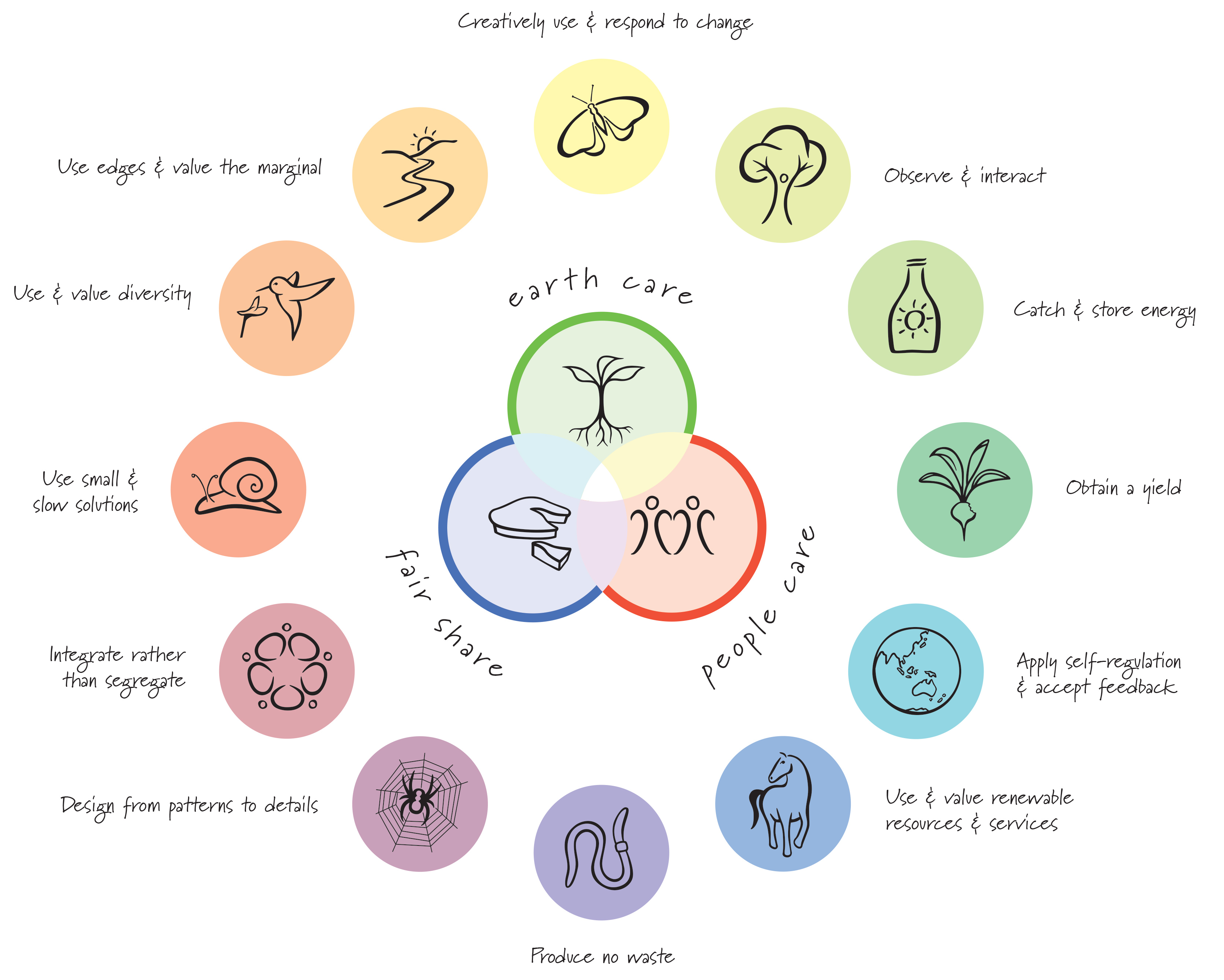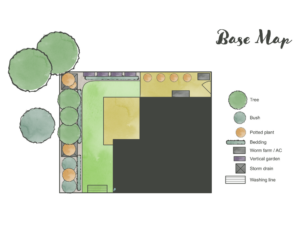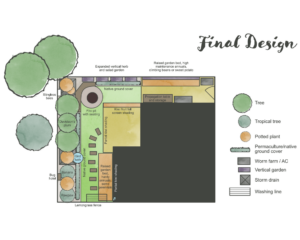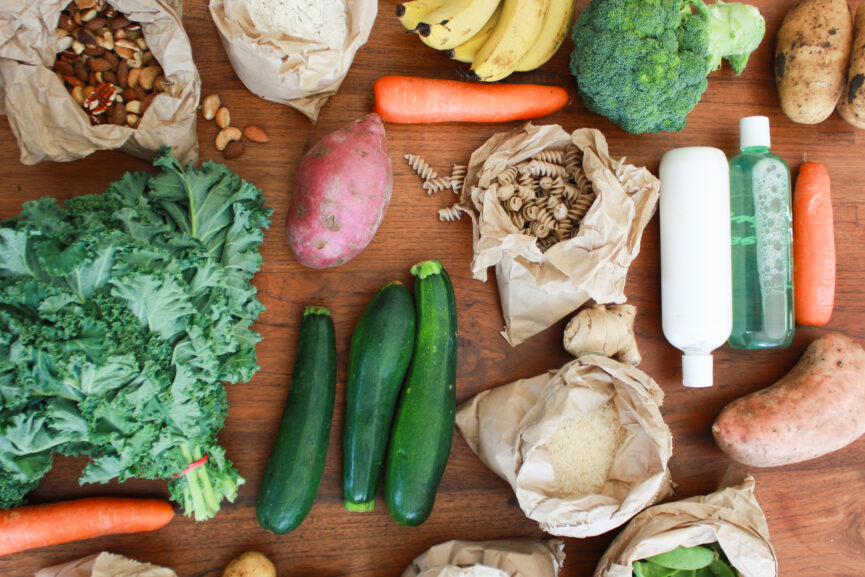When I was in my twenties I lived in a rental property. A neat and tidy townhouse beside Moreton Bay, it had a modest garden with a small patch of grass, a hedge of bottlebrush, and an undercover patio just big enough for a barbeque and table. It was practical and low-maintenance, but it was lacking in biodiversity, beauty and abundance.
I started wondering how I could bring the space to life within the constraints of my rental agreement. Having previously dipped my toes into permaculture whilst studying sustainability, I was curious to learn more; but at the time it felt like something to return to later, when I was able to dig into the soil – both literally and figuratively.
Meanwhile, I was a regular customer at Northey Street City Farm’s weekly farmers market in Brisbane. When I found out that their community garden offered a Permaculture Design Certificate (PDC) I signed up immediately; it felt like the perfect opportunity to unlock creative solutions to my rental garden dilemma.
The PDC course ran over 12 weekends, which gave us plenty of time to immerse ourselves in permaculture theory, and to practice in a real-life garden setting.

Figure 1: Permaculture Ethics and Design Principles (Image Source: Permaculture Principles, permacultureprinciples.com [Creative Commons license CC BY-NC-ND 2.5 AU])
Very early in the course we were introduced to the fundamentals; the three Permaculture Ethics – Earth Care, People Care, and Fair Share. We learnt that underpinning these are 12 Design Principles (see Figure 1).
Meals were shared, deep conversations were had, and lasting friendships forged throughout the course. I learnt a lot from the weekly classes, but there are a few lessons that particularly left a mark on me:
Renters can absolutely practice permaculture
Once I discovered that it was about far more than just how to grow food, I realised that I was already practicing permaculture in many different ways. Connecting with the local community, sharing abundance (whether that be food, skills or other goods), and volunteering a helping hand are all ways to practice earth care, people care and fair share.
Figure 2: Video of a blue banded bee inspecting for available nooks under the rim of this plant pot on my balcony. Blue banded bees create burrows in clay for shelter – it’s possible this one was looking to do that here. Image Source: Rikki-Lea James (Own Work).
But even on the gardening front, there are plenty of ways for renters to get involved. In the years that followed my PDC, I lived in a range of townhouses and apartments, some with little more outdoor space than a balcony. I used my newfound skills to grow food in pots, and planter boxes, to set up worm farms, and even to (inadvertently) create habitat for blue banded bees. Community gardening is also a great way to expand your abundance.
Permaculture zones don’t end at your property boundary

Image Source: Felix Müller (Own Work) [CC BY-SA 4.0 (http://creativecommons.org/licenses/by-sa/4.0)], via Wikimedia Commons
Figure 3: Permaculture Zones
Living on a small property meant that I couldn’t meet all of my needs alone, so I extended my permaculture “zones” beyond my home. On weekends I would walk down to a local farmers market to buy fresh vegetables and fruit that I didn’t have room to grow myself, I had the option of sharing libraries for access to tools and equipment, and I would visit nearby parks with towering gum trees when I wanted to relax in nature.
Systems-thinking is a lifelong skill that can be applied to any context
Permaculture helped me to strengthen my systems-thinking skills. After finishing my course I was able to more easily see how the world is full of interconnected systems, and better understand the patterns and processes of people, nature and planet.
Gardens can be productive, beautiful and biodiverse – all at the same time!

Image Source: Rikki-Lea James (Own Work).
Figure 4: The base map I created to show what my rental garden was like at the beginning of my PDC. I had already added some potted plants where I had space available, and I had set up a worm farm for my kitchen scraps.

Image Source: Rikki-Lea James (Own Work).
Figure 5: By the end of the PDC, I had a final concept design for my rental. I would have had to seek permission from the landlord to do a few of the items (i.e. installing a firepit, adding shade structures and planting new plants into the ground), but others, like the propagation table, bird bath and raised garden beds were things that I could have made a start on right away.
I will admit that, before starting my PDC, I was a bit skeptical about how I could build a garden that was both productive and beautiful. This belief quickly disappeared after I visited a number of stunning permaculture gardens on a PDC field trip. I then had the opportunity to design one myself as part of the course, which started me off on my journey into the world of landscape design – one that I’m still on eight years later.
I went into my PDC course with a curiosity for creating an abundant and biodiverse space to live; I came out of it with a deep passion for systems, community, sustainable design, and living within planetary boundaries.
Learning about permaculture is a powerful way to expand your thinking, deepen your connection to people and nature, and become part of the movement towards a more regenerative and abundant future.
Have you started your own permaculture journey? What have you learnt so far? We’d love to hear from you.
| Additional resources
If you’d like to learn more, there are so many brilliant permaculture thinkers and enthusiasts to follow. Here’s a few links to my favourite podcasts and episodes to get you started:
|
Rikki-Lea James
May 2025

